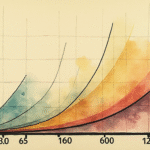Introduction
As the second phase of Morena’s project unfolds, an undeniable reality emerges: “currently, there are no areas of government that can be considered 100% free from the scourge of corruption,” concludes a recent study by the Citizen Participation Committee of Mexico’s National Anti-Corruption System.
Vulnerable Areas
Areas related to procurement of materials and public works are the most susceptible to engaging in improper conduct, according to the study, signed by Rafael Martínez Puon, one of the three members of the citizen organization.
However, other areas that do not necessarily manage financial resources are equally vulnerable. These areas handle human, intellectual, technological, or statistical capital and share a common characteristic: “the management of these resources grants them power and control.”
Accountability and Misconduct
Martínez Puon discovered that accountability can also open the door to misconduct in auditing, complaint investigation, and responsibility establishment areas. These functions are concentrated in Internal Audit Organs.
In the final year of the recently concluded administration (2018-2024), the then Secretariat of Public Function instructed Internal Audit and Improvement of Management areas to conduct “accompaniments” continuously. These accompaniments supported audited areas within each dependency or entity through “forced negotiations,” addressing any negative impact observations, whether for the public treasury or political image and reputation of those dependencies or entities and their officials.
According to this investigation, the Internal Audit Organs were ordered to record these accompaniments in various audit control and tracking systems within the Secretariat, resulting in simulated oversight. All observations made by these reviewing organs had to be addressed through accompaniment by the same authorities who observed them.
Simulated Investigations
In the Denunciations and Investigations areas, simulations were also detected. When a public servant does not adhere to the principles governing public service, it is common for information leaks or biased investigation elements to occur during investigations. This aims to eliminate or mitigate potential wrongdoing by a public official, especially if they hold high rank or if the investigator has connections or relationships with the investigated person or receives “superior instructions.”
Identifying High-Risk Areas
In October of the previous year, the governing body of the National Anti-Corruption System requested a study to identify high-risk areas and positions within federal public administration for corruption.
Rafael Martínez Puon was tasked with this study, consulting various public servants, ex-public servants, society civil members, international organizations, businesspeople, consultants, and academics. The study identified 20 high-risk areas and positions among 30 participants in six focus groups.
The 32-page report was presented to the citizen council’s plenary by Martínez Puon on Wednesday, March 22. The top five positions most susceptible to corruption, according to those consulted by Martínez Puon, were personnel in acquisitions, public purchases, and public works areas; procuratorship and justice administration, fiscalías and public ministries; migration; customs; and internal audit organs.
The last ones, a crucial area in the fight against corruption according to the expert, were identified through testimonies from focus group participants as having high incidences: Auditing; Denunciations and Investigations; and Responsibilities. The positions include auditors, department heads, deputy directors, and area directors in the three mentioned areas.






